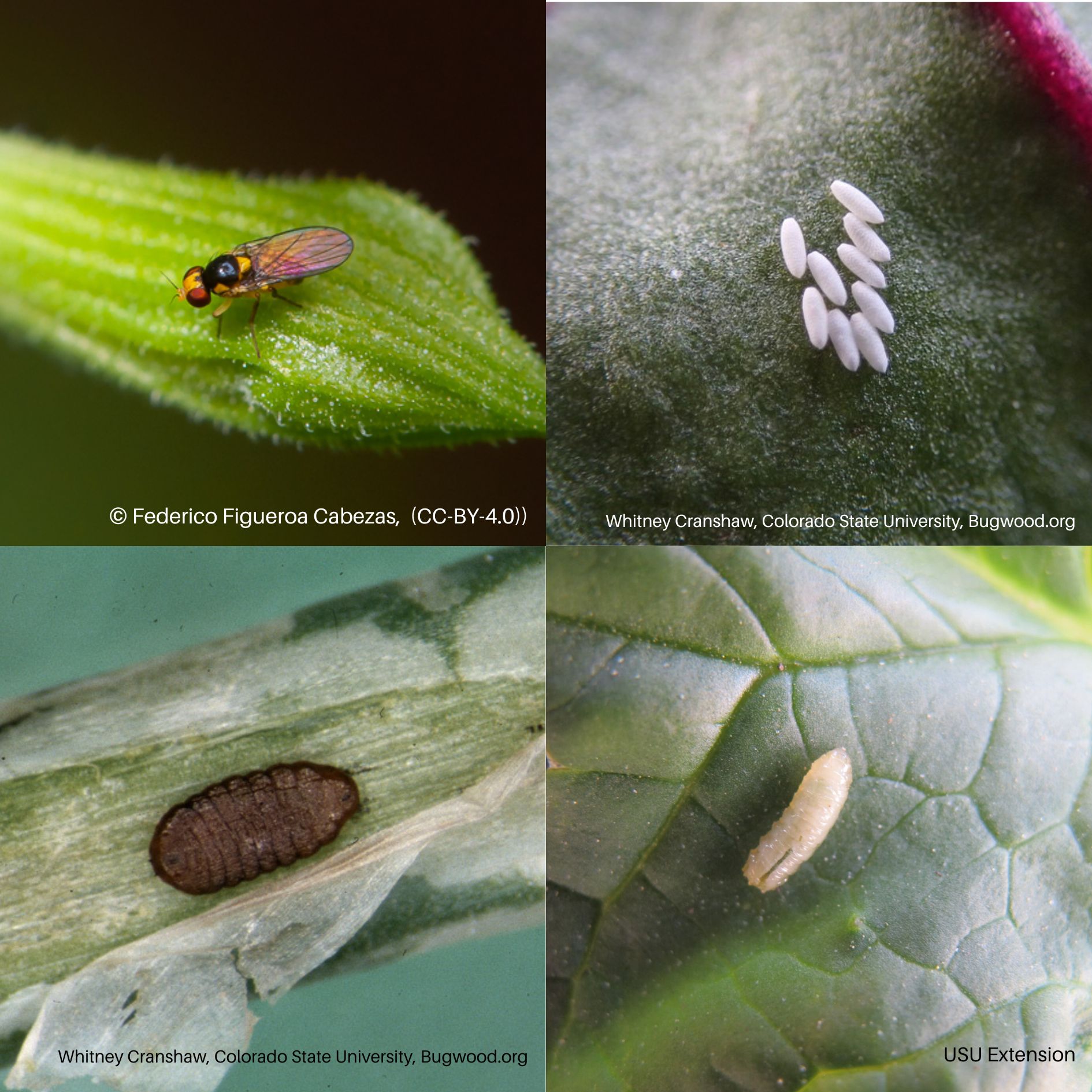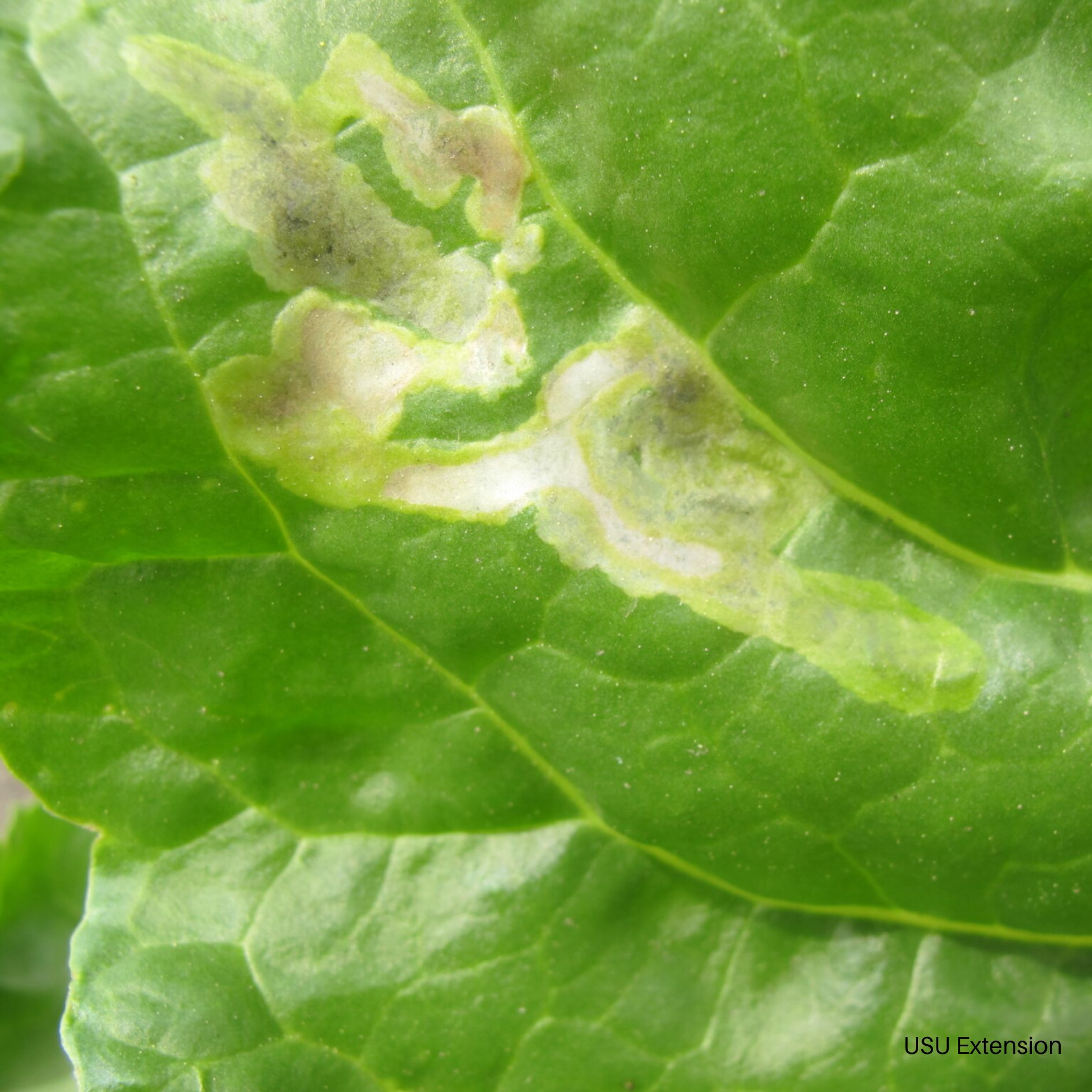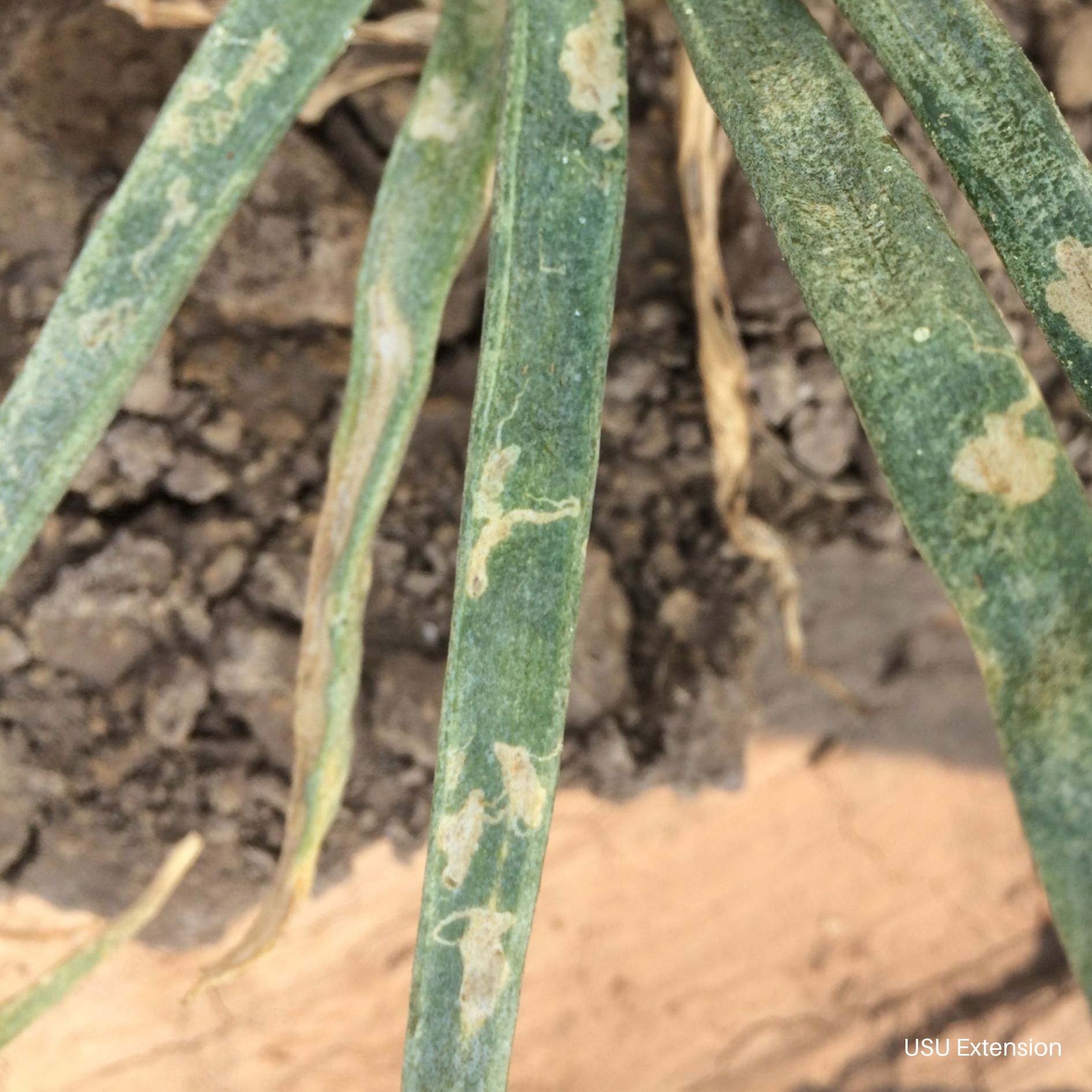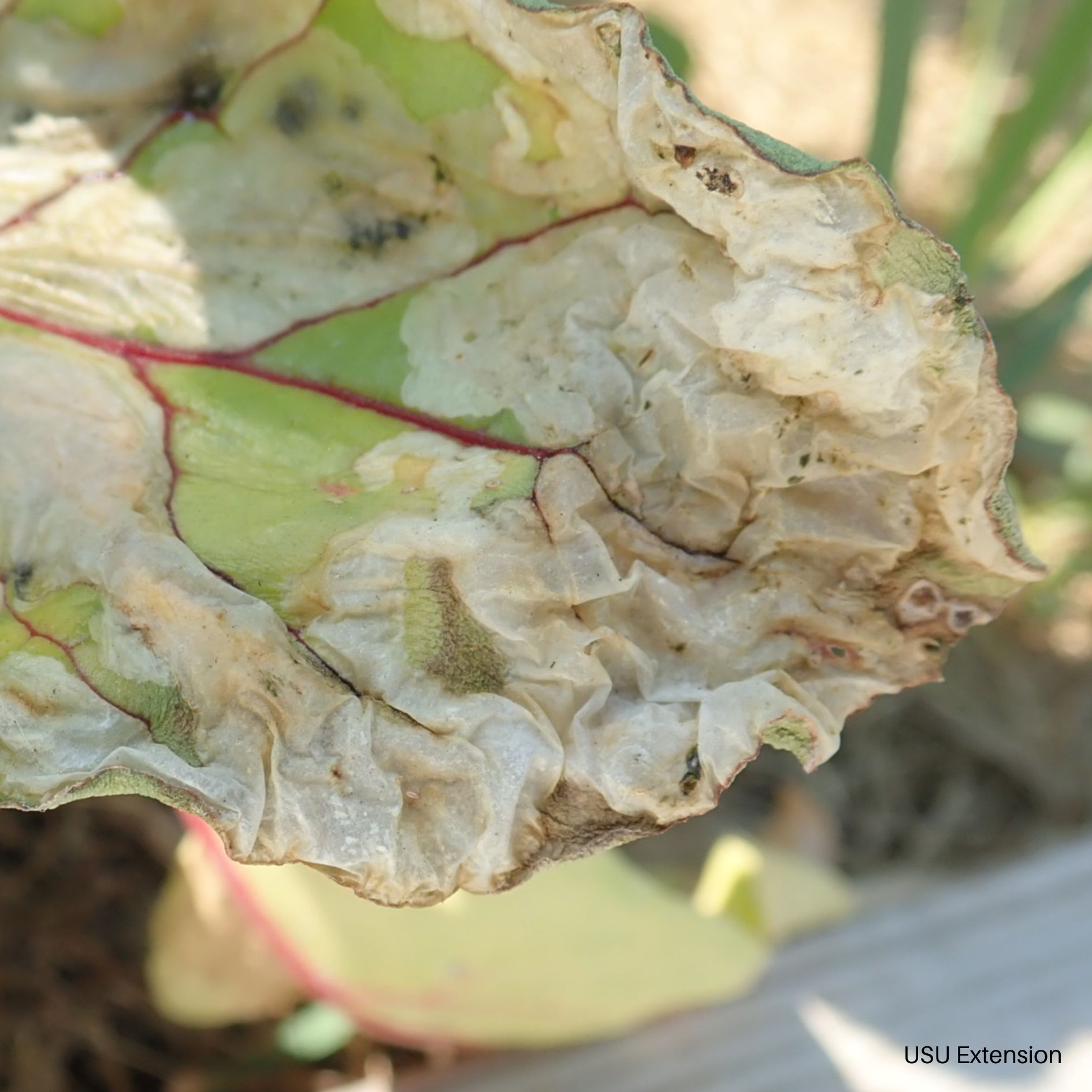Leafminers
HOSTS
- Beets
- Lettuce
- Onion
- Peas
- Onion
- Spinach
- Swiss Chard
DESCRIPTION
Adult flies are small (1.5-8 mm long), and range in color from black to gray. Some also bear yellow markings. Larvae are pale yellow to white and legless. Eggs are oblong and white in color. They are laid singly or in small clusters.
BIOLOGY
Egg | Larvae | Pupa | Adult
Pupae overwinter in the soil, and emerge early in the season as adults. Eggs are laid on the underside of leaves, and hatch after 2-4 days. Newly-hatched larvae tunnel between the upper and lower leaf surfaces causing irregular shaped, whitish mines or “blisters”. Larvae will emerge from the mines to pupate on the leaf surface or drop to the ground to pupate in the soil. Leafminers have several generations per season.
SYMPTOMS
- White to brown colored tunnels or mines in foliage.
- Pale yellow larvae may be found within the mines.
- Necrotic or dry tissue on leaves where mines were developed.
SCOUTING
- Starting in May, begin looking for small rows of white, oblong eggs on host leaves.
- Monitor seedling for leaf mines.
GENERAL MANAGEMENT
- Remove weeds and crop debris that can act as alternative hosts.
- Cultivate the soil around crops and late in the fall to uncover overwintering pupae.
- Attract and conserve parasitic wasps that prey on leafminers. Plant flowering plants with nectar and pollen-rich umbel-type flowers.
- Remove infected leaves.
INSECTICIDES
Generally, leafminer numbers are strongly suppressed by natural predators, and outbreaks are usually associated with using insecticides. However, treatment can be considered if populations are high and causing economic damage.
Click here to reference insecticide options.





